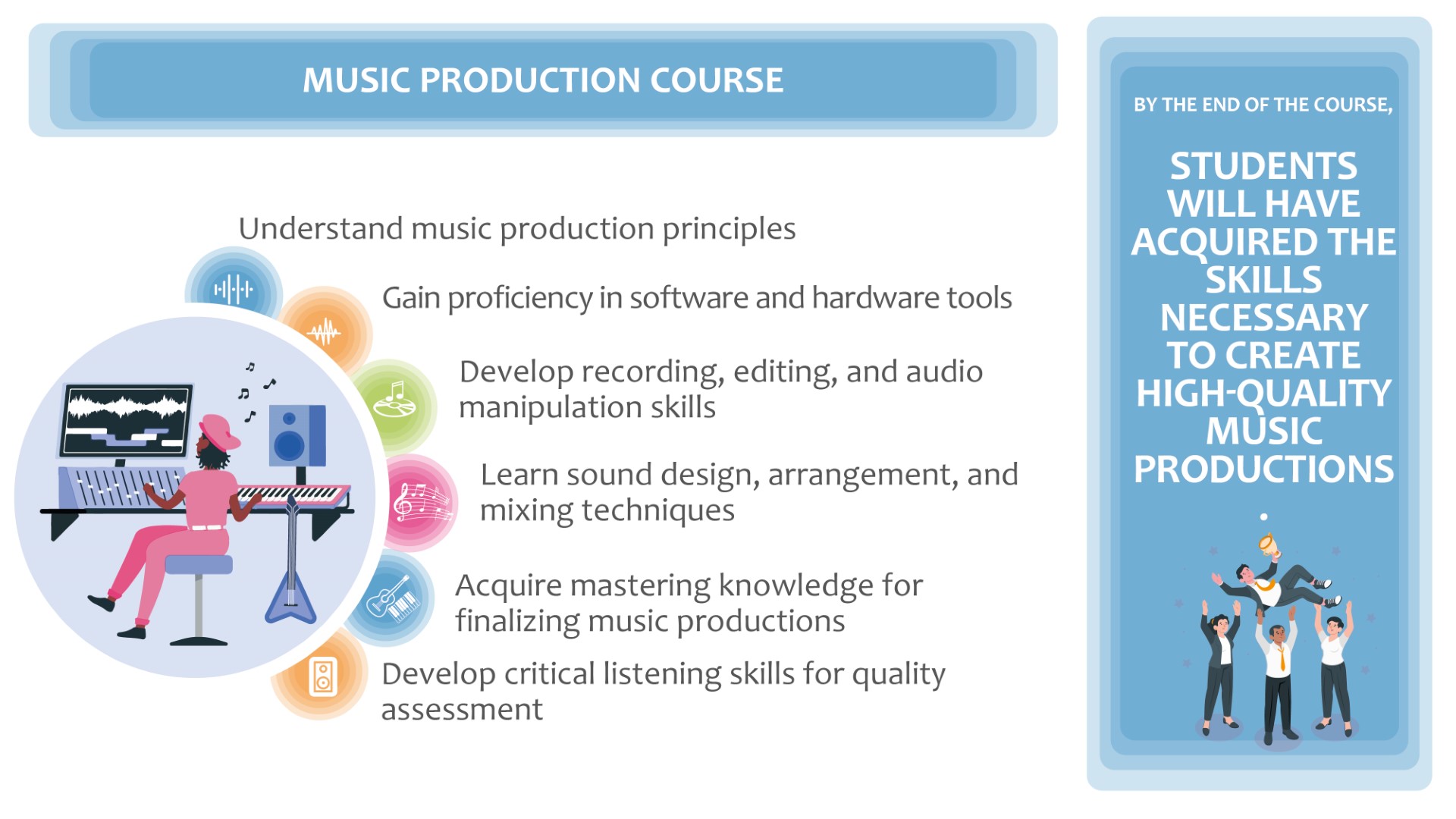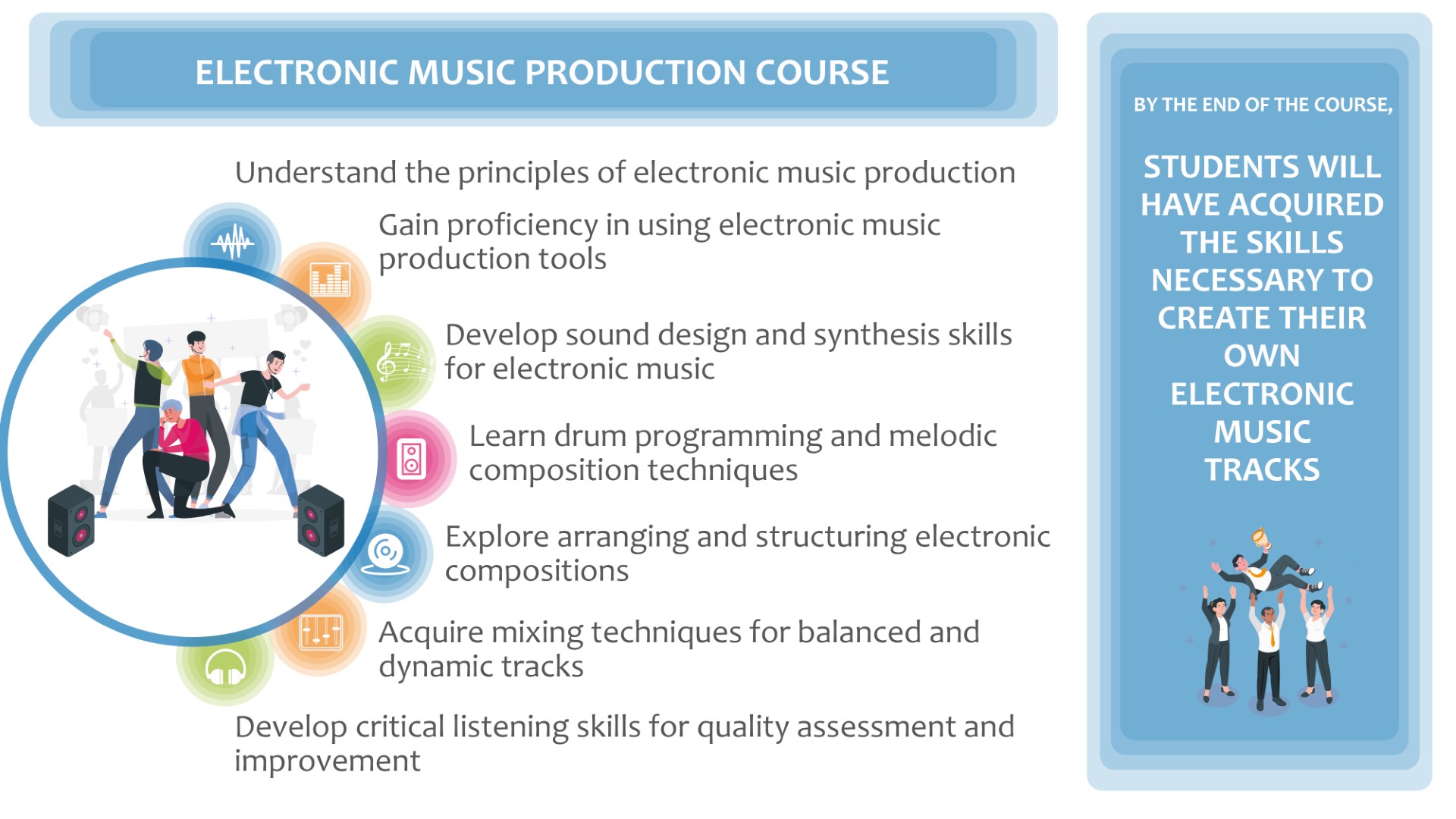

In this course, students will learn the fundamentals of electronic music production in the context of a specific genre. They will work with software instruments, samples, and MIDI to create an original track that showcases the style and techniques of the genre.
1. Introduction to Electronic Music Production
– Understanding the fundamentals of electronic music production
– Introduction to the specific genre and its characteristics
2. Software Instruments and Samples
– Introduction to software instruments and samples
– Using software instruments and samples to create a basic track
3. Creating Beats and Grooves
– Understanding the importance of rhythm in electronic music
– Creating beats and grooves using MIDI and samples
4. Sound Design and Synthesis
– Introduction to synthesis and sound design
– Creating and modifying sounds using synthesizers
5. Arrangement and Song Structure
– Understanding the principles of arrangement and song structure in electronic music
– Creating an arrangement that fits the conventions of the genre
6. Effects Processing
– Understanding the role of effects in electronic music production
– Using effects to enhance the sound of the track
7. Mixing and Mastering
– Balancing the levels of all tracks in the mix
– Using EQ, Compression and other techniques to enhance the overall sound
– Exporting the final track for distribution
By the end of the course, students will have gained the skills necessary to create an original electronic music track in a specific genre. They will learn how to use software instruments, samples, and MIDI to create beats, grooves, and melodies. They will also learn how to arrange a track and use effects to enhance the overall sound. Finally, they will learn how to mix and master the track to a professional standard.

1. Introduction to Oriental Music and Maqam
– Understanding the fundamentals of Oriental Music
– Introduction to Maqam and its various scales
2. Ikaa and Rhythmic Patterns
– Understanding Ikaa and its various rhythms
– Learning to create and modify Ikaa patterns
3. Audio Recording and Editing
– Recording live performances and importing them to the software
– Editing the audio files and preparing them for the project
4. MIDI and VSTi
– Introduction to MIDI and its applications in music production
– Using VSTi plugins to create and modify loops and samples
5. Composing Melodies and Accompaniments
– Creating original melodies and accompaniments using MIDI and VSTi
– Learning how to improvise in oriental music
6. Sound Design and Effects
– Adding sound effects to enhance the overall sound of the track
– Learning how to manipulate the sound using various effects plugins
7. Mixing and Mastering
– Balancing the levels of all tracks in the mix
– Using EQ, Compression and other techniques to enhance the overall sound
– Exporting the final track for distribution
By the end of the course, students will have gained the skills necessary to create an original piece of oriental music, incorporating traditional Maqam and Ikaa elements, as well as modern production techniques. They will also learn how to mix and master the track to a professional standard.
